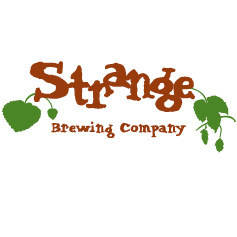
In Florida, for instance, growlers that hold a quart of beer or less are completely legal, as are jugs that hold a gallon or more. Anything in between, however, is not allowed in the Sunshine State.
“You can come in here and buy a gallon, you can buy a quart, you can buy two quarts, but I can’t sell you a half-gallon. And it’s the industry standard,” Ben Davis, owner of Institution Ale Works, told the Associated Press (AP).
Last year, State Rep. Debbie Mayfield refused to bring the issue up for a vote in the House Business and Professional Regulation Subcommittee, saying that she did not have a specific issue with growlers, but moreso wanted to “address the craft beer industry as a whole in an effort to help it grow,” the article stated. For Mayfield, that means looking at a range of factors and legislation affecting the growth of craft beer.
“That industry is one of the fastest growing industries in the country, and in Florida we just want to make sure we get our share,” Mayfield told the AP. “We just want to make sure that we aren’t going to get road-blocked.”
While Florida residents may be upset about the amount of beer that they can buy, in Indiana, it’s the temperature of it that’s got some retailers up in arms. Only package liquor stores in the state are permitted to sell cold beer, while convenience and grocery stores are required to sell beer at room temperature.
Convenience and grocery store owners are now making their case in federal court — after having their arguments denied by Indiana’s General Assembly — and claiming that the law violates the equal protection clause of the 14th Amendment, according to WFPL News.
Scot Imus, executive director of the Indiana Petroleum Marketers and Convenience Store Association, which filed the suit, told WFPL that the problem isn’t one of policy, “but based on propping one group of businesses up and giving them advantage over another group of businesses.
Liquor stores counter that the exclusive right to sell chilled beer comes at a cost, citing that no one under 21 is allowed in the stores, as well as stricter permit laws that limit sales.
In the beer industry, as well as in most facets of life, conflict does not always arise from two separate sides. Often, there is industry infighting. One recurring feud of that kind is over trademarks, though they can certainly end amicably.
It did in the case of Strange Brewing, of Denver, Colo. versus Strange Brew Beer and Wine Making of Marlborough, Mass.
The two sides announced a mutual settlement after a yearlong dispute that started when the Marlborough-based company alleged the Denver brewery was violating its federal trademark on the name.

“I am glad that we were finally able to come to a resolution which respects our right to the Strange Brew trademark while still keeping Strange Brewing Strange,” Brian Powers, owner of Strange Brew Beer & Wine Making, said in the release.
While smaller brands strive to differentiate from the herd, the bigger ones continue the effort of blending in with what’s popular, as evidenced now by Anheuser-Busch InBev (AB) introducing Johnny Appleseed, a brand of cider, to hit the market next year.
As with other company-owned craft-centric brands, including Shock Top, AB has is launching the product without the prominent AB name. The announcement coincides with the rising popularity of hard ciders in recent years.
According to AdAge, “MillerCoors and A-B InBev were both absent from the U.S. cider market as recently as 2011. But the big brewers began jumping aboard last year as the cider trend showed staying power.”
It adds, “Total volume sales of cider grew to 85.4 million last year from 59.2 million liters in 2011, according to Euromonitor International, whose statistics also include fermented pear juice.”
With Thanksgiving and a long weekend looming, however, we’ll leave you with something fun to share with the family.
Remember that old party trick where a drunkard taps the top of another person’s bottle with the bottom of his own, causing the former’s to foam up and spill out uncontrollably?
Well, some researchers in Spain and France have finally figured out what causes that to happen.
It stems from cavitation, the phenomenon of bubbles appearing in liquid after an impact.
A press release lays it out nicely:
“After a sudden impact against a bottle’s mouth, back and forth movement of compression and expansion waves will cause bubbles to appear and quickly collapse,” the release stated. “The team’s investigation of beer bottle-fluid interactions demonstrated that the cavitation-induced break-up of larger “mother” bubbles creates clouds of very small carbonic gas “daughter bubbles,” which grow and expand much faster than the larger mother-bubbles from which they split. The rapid expansion of these daughter bubbles gives the foam buoyancy.”
The more you know.
